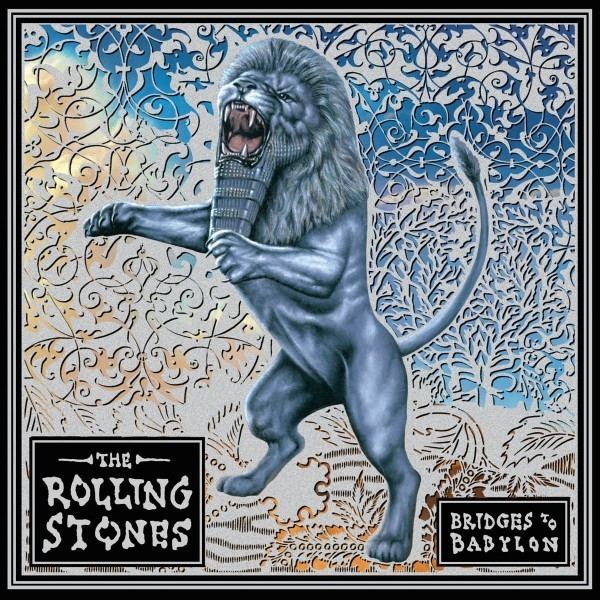Length 62:27 Release date 23 September 1997 | Artist The Rolling Stones | |
 | ||
Released 29 September 1997 (1997-09-29) Producer Don Was, The Glimmer Twins, with Rob Fraboni, Danny Saber, Pierre de Beauport, and The Dust Brothers Awards Porin Award for Best Foreign Pop/Rock Album Nominations Grammy Award for Best Rock Album, Echo Award for Best International Rock/Pop Group Similar The Rolling Stones albums, Rock music albums | ||
Bridges to Babylon is the 21st British and 23rd American studio album by British rock band The Rolling Stones, released by Virgin Records on 29 September 1997. It would prove to be the band's final studio album of the 1990s and their last full-length release of new songs until 2005's A Bigger Bang. Released as a double album on vinyl and a single CD, the album was supported by the year-long worldwide Bridges to Babylon Tour that met with much success.
Contents
- Flip the switch the rolling stones
- Background and recording
- Packaging
- Release and reception
- Track listing
- Personnel
- Songs
- References
Flip the switch the rolling stones
Background and recording
Following the Voodoo Lounge Tour, and Stripped projects of 1994/1995, the Stones afforded themselves a brief respite before Mick Jagger and Keith Richards began composing new songs together in the summer of 1996 with demos to follow as they met in New York in November and London the following month. Another writing session happened in Barbados on January 1997.
In March 1997, the band arrived in Los Angeles to start the recording sessions at Ocean Way Studios. After many albums recorded in isolated islands, working in a big city allowed for the contribution of various musician friends of the band. Bridges to Babylon was recorded until July, and the four month production made it one of their most concise periods of recording in years. The sessions would frequently be all-nighters that lasted until Richards got tired by the morning.
Although Don Was would be the producer again, Jagger arrived before the other Stones to seek local producers. First were The Dust Brothers, who had impressed Jagger with their work on Beck's Odelay and the Beastie Boys' Paul's Boutique. The Dust Brothers' contributions were initially five, but were reduced to three, which mark the only Stones songs to feature sampling. Danny Saber and Babyface were also brought in by Jagger, though the latter's contributions to the track "Already Over Me" were eventually discarded. Richards was not keen on the idea of working with "loop gurus", going as far as expelling Saber from the studio once he found him overdubbing guitars. Richards brought in Rob Fraboni for his solo material, and Was made sure to work with Richards and Jagger in separate rooms. Drummer Charlie Watts would relieve the tense environment by working along with percussionist Jim Keltner, who he would later draft for a solo project. By the final week of recording, the Stones were not in speaking terms, with Jagger boycotting sessions arranged by Richards' crew and Watts leaving Los Angeles as soon as he finished his contributions.
During the album's mastering, the projected lead single "Anybody Seen My Baby?" was found to resemble k.d. lang's 1992 hit "Constant Craving" in its chorus, a discovery brought to Richards' attention by his daughter Angela. Seeking to avoid possible future legal entanglements, lang and her co-writer Ben Mink were credited along with Jagger and Richards on the new song. Upon its release, it would reach #22 in the UK and become a U.S. radio rock hit.
A total of eight different musicians played bass on the sessions for the album: Jeff Sarli, Jamie Muhoberac, Blondie Chaplin, Don Was, Danny Saber, Darryl Jones, Me'shell Ndegeocello, and Doug Wimbish.
Packaging
Once the Rolling Stones picked Stefan Sagmeister to be the album's art director, Jagger told him to seek inspiration from Babylonian art exhibited at the British Museum. Sagmeister was most impressed by a Lamassu sculpture, featuring a lion with a human head and beard, and commissioned artist Kevin Murphy to paint a similar Assyrian lion in an attack stance. The first million units of Bridges to Babylon were encased in a special manufactured filigree slipcase, that gave the impression that the lion was embedded into the design. The desert background of the cover was extended throughout the booklet, featuring ruins that were the basis for the Bridges to Babylon Tour stage design.
Release and reception
Bridges to Babylon, containing an unprecedented three solo vocals by Richards, was released to mixed reviews. It reached #6 in the UK, #2 in France and #3 in the US, where it was certified platinum by the RIAA in November 1997. As of January 2010, Bridges to Babylon has sold 1.1 million copies in the U.S. Further singles "Saint of Me" and concert staple "Out of Control" were also minor hits.
The Stones had become a touring phenomenon by this point. The Bridges to Babylon Tour in 1997 consisted of 108 shows, with an elaborate stage design Jagger aimed to make similar to U2's PopMart Tour.
In 2009, Bridges to Babylon was remastered and reissued by Universal Music.
Track listing
All tracks written by Mick Jagger and Keith Richards, except where noted.
Personnel
The Rolling Stones
Production
Additional musicians
Songs
1Flip the Switch3:27
2Anybody Seen My Baby?4:31
3Low Down4:24
